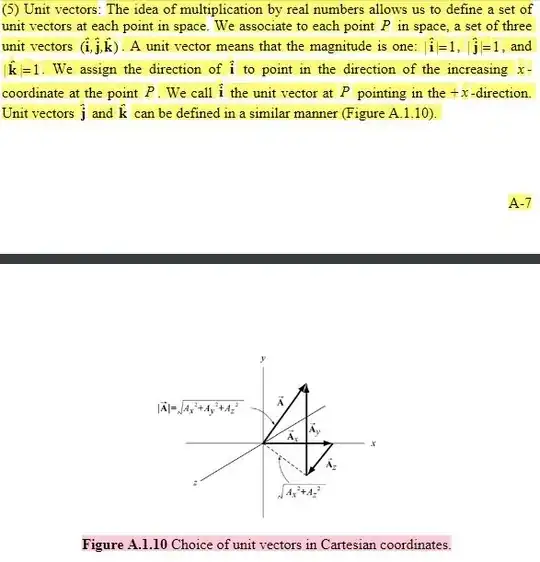Remember that we always (almost always) deal with free vectors, that is, vectors which we can move freely along the space, provided that we do not distort them meanwhile. This means that you can displace vectors wherever you want, as long as you don't rotate them, nor stretch them, and so on. Just translation.
So, what you're seeing in the figure is a vector $\vec{A}$, and its components. If you move them all so that all vectors start from the origin, you'll see that $A_x$, $A_y$ and $A_z$ are their cartesian components.
So, why do they appear moved? Because the author wanted. We can do it, they are free vectors. Check that the author is putting each vector after the previous one. That is, $A_y$ starts where $A_x$ ends. That's done to make it clear how the sum $\vec{A}_x+\vec{A}_y+\vec{A}_z=\vec{A}$.
EDIT:
The choice of unit vectors $\lbrace\hat{i}, \hat{j}, \hat{k}\rbrace$ is part of the process of fixing a reference frame and a set of axis. Since your three unit vectosr are cartesian, then your components will be cartesian components, and they satisfy
$$\vec{A}_x=A_x \cdot \hat{i}; \quad \vec{A}_y=A_y \cdot \hat{j};\quad \vec{A}_z=A_z \cdot \hat{k}$$
And also
$$A_x=\vec{A} \cdot \hat{i}; \quad A_y=\vec{A} \cdot \hat{j}; \quad A_z=\vec{A} \cdot \hat{k}$$
